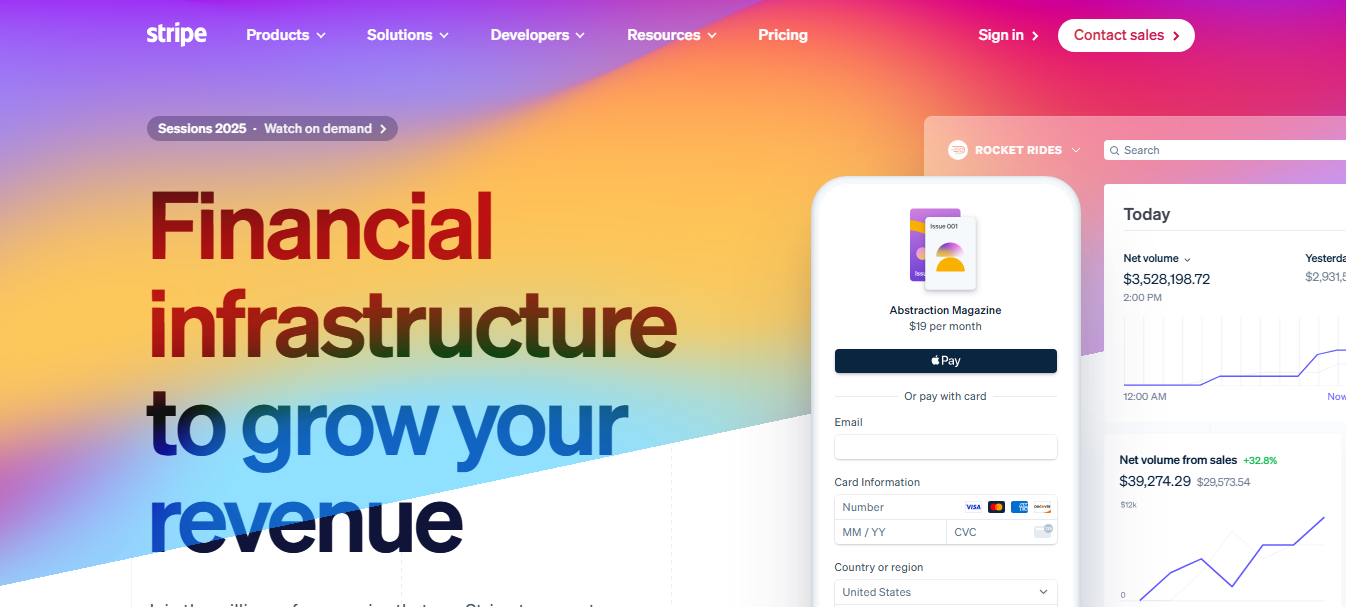Patrick and John Collison didn’t launch Stripe with a splash. They launched it with cold emails and manual installs. Just two brothers writing code and helping developers accept payments — sometimes within hours. Fast forward, and Stripe is now valued at $50 billion, powering millions of businesses worldwide. No marketing team. No growth hacks. Just relentless speed, hands-on onboarding, and solving a brutal pain point. In this story, you’ll see how doing the work no one wants to do became their unfair advantage — and how it still applies to builders today.
How two brothers skipped the launch and built trust instead ?
Stripe didn’t start with a big reveal. It started with code, conversations, and hands-on help. The Collison brothers weren’t building hype — they were solving something painful, one developer at a time.

From teenage coders to quiet builders
Patrick and John Collison weren’t new to startups. By their early 20s, they had already sold a previous company (Auctomatic) for $5 million. Originally from Ireland, they moved to the U.S., studied at MIT and Harvard (briefly), then dropped out to build full-time. Their edge? They were builders first. Both had been writing code since they were kids. They didn’t need to learn how to pitch — they just needed to fix a real problem. And they were about to find one that nearly every developer hated dealing with.
The insight : payments were still broken
Back in 2010, accepting payments online was a nightmare. APIs were clunky. Approval processes took weeks. You needed merchant accounts, gateways, and patience. The Collisons saw this firsthand while working on side projects. Why was something so essential — taking money — still so hard? That frustration became fuel. They didn’t try to rethink finance. They just asked: what if developers could start accepting payments with a few lines of code? That one question sparked what would become Stripe — a product built for developers, by developers, at a time when no one else was speaking to them directly.
First installs, cold emails, and real-time help
Instead of launching with a press release, they did something smarter: they emailed people directly. Startup founders. Indie devs. Friends of friends. And instead of pitching, they offered to install Stripe for them. Sometimes the same day. They weren’t chasing vanity metrics — they were collapsing the time between “I’m interested” and “I’m live.” Their MVP was fast, functional, and frictionless. Every new user was onboarded manually. Every line of feedback turned into code. It was gritty, human, and wildly effective. And it laid the foundation for one of the most trusted APIs on the web.
When small installs sparked massive momentum
Stripe didn’t explode overnight — but the compound effect of helping early users fast, and listening closely, turned into real traction. And from there, the flywheel kicked in.

From dev favorite to default choice
Stripe started gaining steam as more indie developers and startups realized how simple it made payments. No paperwork. No waiting. Just clean code and instant results. By 2012, it was powering early-stage startups like Lyft and Shopify. Growth came from inside communities like Hacker News and YC — not from ads or launch events. The product spread through real conversations and shared code snippets. Stripe became the go-to for founders who wanted to move fast. Developers didn’t just like it — they trusted it. And that trust turned Stripe into infrastructure.
Scaling without breaking the magic
As usage grew, so did the pressure. The team had to scale infrastructure, handle compliance, expand internationally — all without slowing down the user experience. Payments are messy behind the scenes: fraud, regulation, bugs. And competitors (like PayPal) had a head start. But Stripe doubled down on simplicity and developer love. They shipped obsessively clean APIs, opened up excellent docs, and kept support human. The biggest challenge? Growing fast without losing what made early users stick. They pulled it off by keeping a strong product culture and staying insanely close to their users, even as the numbers grew.
Stripe today : quiet giant, still builder-first
Today, Stripe powers millions of businesses across the globe, from tiny SaaS startups to Amazon. Its valuation has crossed $50 billion, with a presence in over 40 countries. But the mindset hasn’t changed. The company still obsesses over docs, speed, and developer experience. Tools like Stripe Atlas (for starting companies) and Checkout (for easy payment flows) keep reinforcing that core mission: make business online easier. While the Collison brothers are now high-profile founders, Stripe still feels like it was built by — and for — people who ship. The product may have scaled, but the DNA is still indie.
Build something that solves a real pain, even if it starts scrappy. Talk to your users early — and actually help them. Don’t wait to “launch” when you can just show up and ship. Stripe didn’t win because it was loud; it won because it was useful, fast, and trusted. You don’t need perfect. You need live, learning, and momentum. So if you’re sitting on an idea? Write the DM. Send the first email. Help one person today — and let that be your start.


